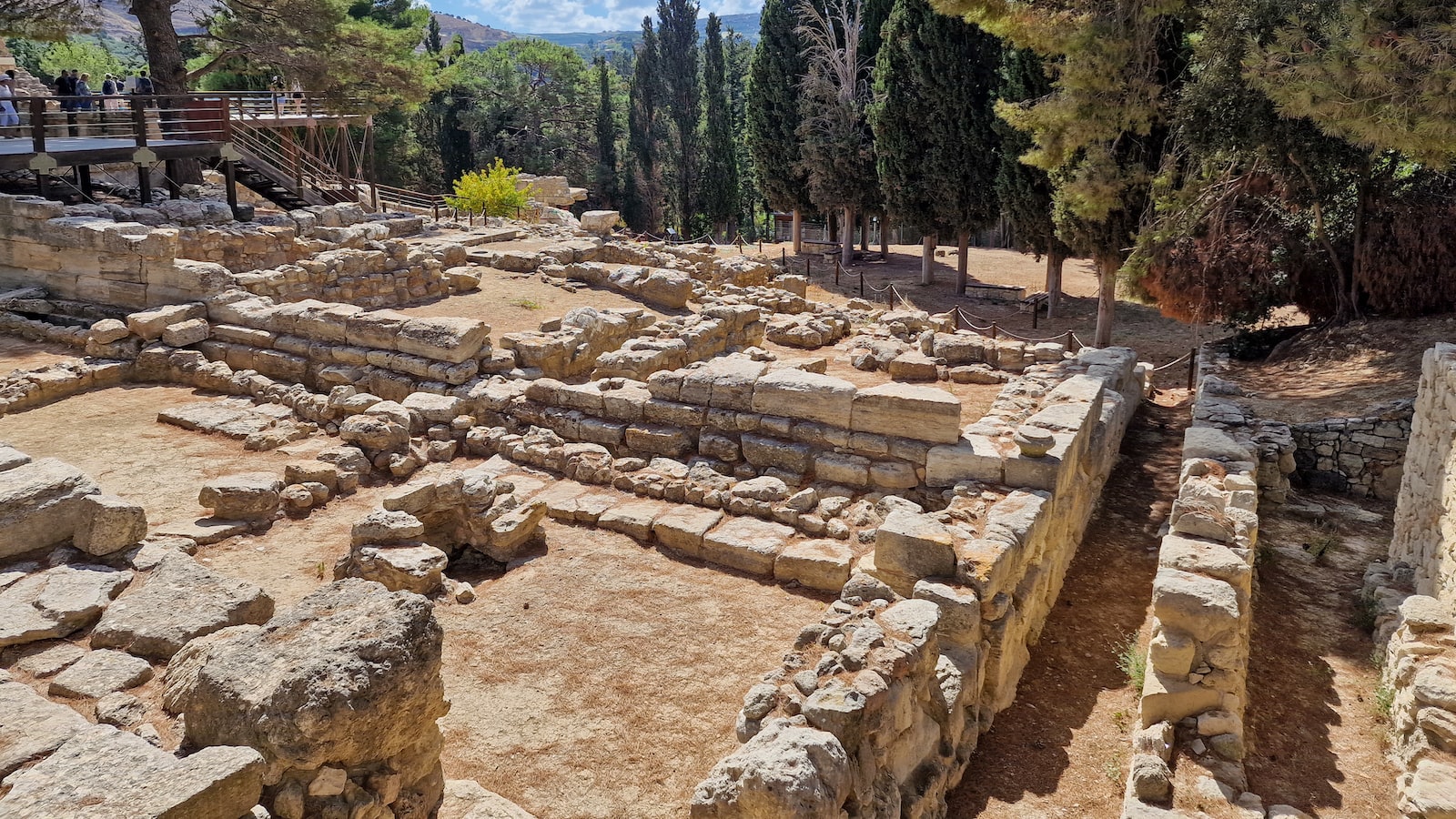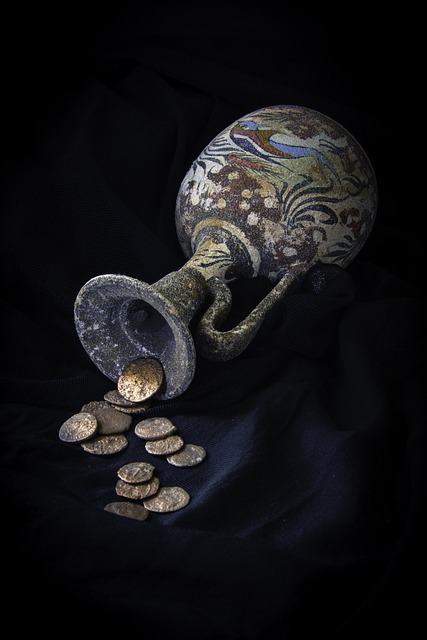In the vast tapestry of human history, there are moments shrouded in mystery, hidden beneath the sands of time, waiting patiently to be rediscovered. Among these enigmatic chapters, the Minoans and Mycenaeans stand as stark reminders of the splendor and allure of lost civilizations. Spanning the captivating era of the Bronze Age, these two ancient cultures flourished on the shores of the Aegean Sea, leaving behind echoes of their existence that tantalize and bewilder modern-day archaeologists. Journey with us as we embark on a quest to unravel the secrets of the Minoans and Mycenaeans, delving into their captivating tales and unearthing the remnants of their faded glory.
The Rise and Fall of the Minoans: Unveiling the Secrets of an Ancient Civilization
Embark on a journey back in time to uncover the captivating enigma of the Minoans and Mycenaeans, two lost civilizations that flourished during the mesmerizing Bronze Age. These ancient peoples, who once inhabited the vibrant shores of Crete and mainland Greece, left behind a trail of mysteries that continue to intrigue historians and archaeologists today.
Step into the allure of the Minoan civilization, graced with magnificent palaces adorned with stunning frescoes and intricate labyrinthine structures. Marvel at their advanced architectural marvels, evidence of a society steeped in innovation and artistry. Delve into the enigmatic language of Linear A, a script yet to be deciphered, that conceals the rich history and literature of this long-lost culture. Witness the remnants of their great myths and rituals, uncovering shards of truth that once shaped the lives of these ancient people.
In the wake of the Minoan reign, a fascinating interplay between civilizations ensued as the Mycenaeans rose to prominence. Explore how these formidable conquerors assimilated aspects of Minoan culture, leaving behind a captivating mix of traditions. Wander through the awe-inspiring palaces of Mycenae, forever immortalized in epic legends such as Homer’s “Iliad” and “Odyssey.” Unravel the secrets of their linear B script, a breakthrough that unraveled the linguistic mysteries of this enigmatic civilization.
Through the rise and fall of these ancient marvels, the Minoans and Mycenaeans left behind a legacy that echoes through the annals of history. Their stories, though shrouded in the mists of time, yearn to be heard and understood. Embark on an ancient quest, where the whispers of forgotten civilizations beckon you to unlock their hidden truths.

The Mycenaeans: Warriors, Builders, and Traders of the Bronze Age
The Minoans
The Minoans, an ancient civilization that flourished on the island of Crete during the Bronze Age, have left behind a fascinating legacy. Renowned for their advanced art and maritime prowess, they were pioneers in various fields, from architecture to trade. Their sprawling palaces adorned with vibrant frescoes showcased their unique artistic style, depicting scenes of everyday life and religious rituals.
Besides their artistic achievements, the Minoans were also accomplished builders. Their intricate palaces, such as the famous Knossos, exemplify their architectural superiority. The elaborate layouts included courtyards, grand staircases, and well-planned drainage systems. The Minoans’ construction expertise was ahead of their time, leaving us in awe of their engineering acumen.
- The Minoans were seafarers, dominating the Mediterranean with their advanced fleet of ships.
- They engaged in long-distance trade, exporting goods such as olive oil, pottery, and wine.
- Their writing system, known as Linear A, remains undeciphered, adding an air of mystery to their civilization.
The Mycenaeans
Stepping out of the shadows, the Mycenaeans emerge as a formidable civilization during the Bronze Age. Originating from mainland Greece, they inherited much from their Minoan neighbors while forging their own path. The Mycenaeans were a warrior society, well-equipped and employing advanced military tactics.
- They constructed imposing fortresses, such as the legendary citadel of Mycenae, displaying their prowess in defensive architecture.
- Mycenaean pottery, characterized by intricate designs and rich narratives, was highly sought after in the trading networks spanning the Eastern Mediterranean.
The Mycenaeans were not only warriors but also shrewd traders. Their geographic position allowed them to control vital maritime routes, facilitating extensive trade networks. They exchanged commodities such as bronze, weapons, pottery, and precious goods, bringing wealth and cultural influences to their civilization.

Exploring the Minoan and Mycenaean Legacy: Must-Visit Archaeological Sites and Museums
The Minoan and Mycenaean civilizations were two influential cultures that thrived during the Bronze Age in ancient Greece. Exploring the remnants of these lost civilizations can provide an intriguing glimpse into their remarkable achievements and legacies. Here are some must-visit archaeological sites and museums that offer an immersive experience into the fascinating world of the Minoans and Mycenaeans.
Archaeological Sites:
- Knossos Palace (Crete, Greece): Step into the labyrinthine ruins of the legendary Knossos Palace, the center of Minoan civilization. Marvel at the intricately designed frescoes, the grand throne room, and the ritualistic symbolism engraved into each stone. Uncover the secrets of these skilled architects and storytellers.
- Mycenae (Peloponnese, Greece): Visit the imposing ruins of Mycenae, the storied city of Homer’s “Iliad.” Stroll through the Lion Gate, the monumental entrance to this ancient city. Explore the Cyclopean walls that have withstood the test of time, and enter the Treasury of Atreus, a stunning beehive-shaped tomb fit for a king.
- Akrotiri (Santorini, Greece): Discover the remarkably preserved ruins of Akrotiri, a Minoan city buried beneath volcanic ash for centuries. Wander through the streets, admire the colorful frescoes, and marvel at the advanced urban planning that characterized this prosperous port city.
Museums:
- Archaeological Museum of Heraklion (Heraklion, Crete): Immerse yourself in the world of the Minoans through a vast collection of artifacts, including the enigmatic Phaistos Disk and the awe-inspiring Snake Goddess statuette. Gain insight into their daily life, religious practices, and artistic heritage through the meticulously curated exhibits.
- National Archaeological Museum (Athens, Greece): Embark on a journey through the fascinating artifacts discovered in Mycenae, Troy, and other significant archaeological sites. Stand in awe before the sensational gold funerary mask of Agamemnon, artifacts from the legendary city of Troy, and a myriad of other treasures that provide a window into the Mycenaean culture.
As you wander through these awe-inspiring archaeological sites and museums, let your imagination transport you back to the times of these lost civilizations. By exploring their legacies, you can gain a deeper understanding of the rich cultural heritage that shaped ancient Greece and influenced countless generations to come.
Key Takeaways
As we bid farewell to the enigmatic world of the Minoans and Mycenaeans, we are left with a tapestry of intrigue and wonder woven by the hands of time. Lost to the annals of history, their civilizations cast shadows upon our understanding of the Bronze Age, leaving us yearning for more fragments of their captivating stories.
These ancient civilizations, once alive and vibrant, dwelled in a realm shrouded in mystery. From the flowery palaces of Knossos to the formidable citadels of Mycenae, their architectural marvels stood as testaments to their ingenuity and artistic prowess. Each stone and fragment unearthed from their forgotten ruins whispers tales of a bygone era, tantalizing our imagination and beckoning us to unravel their secrets.
Yet, the treasure troves of these lost civilizations extend beyond mere structures. It is through their intricate frescoes, portraying captivating scenes, and their mysterious Linear A and B scripts, that we catch glimpses of their daily lives and aspirations. The vivid depictions of ceremonies, deities, and even sporting events transport us to an era when gods walked among mortals, and warriors jousted with valorous hearts.
Navigating the dusty corridors of time, we encounter the echoes of enigmatic figures who once shaped their societies. A faint whisper speaks of the legendary King Minos, whose labyrinth housed the fearsome Minotaur, and the charismatic King Agamemnon, who led the Mycenaean Greeks to Troy in a quest immortalized by the poet Homer. These larger-than-life characters inspire a sense of awe, entwining our own stories with theirs, bridging the gap between ancient and modern times.
However, as we gaze upon the remnants of these ancient civilizations, we are humbled by the knowledge that our Ithaca remains elusive. Countless questions arise: What befell the Minoans? Did the Mycenaeans’ stirring conquests sow the seeds of their eventual downfall? How did their legacies intertwine with civilizations that followed in their wake?
The truth may forever be veiled, obscured by the passage of millennia and veiled by the sands of time. Yet, it is within this uncertainty that the allure of these lost civilizations persists. The Minoans and Mycenaeans continue to captivate us with their enigmatic allure, whispering echoes of the past that resonate with our present.
As we depart from the enigmatic realms of Knossos and Mycenae, we carry with us a newfound appreciation for the intrepid explorers and tireless scholars who dedicate their lives to unraveling the mysteries of civilizations long gone. In their tireless pursuit, they reanimate forgotten voices, revive ancient melodies, and paint vivid portraits of worlds that live on in the crevices of our collective consciousness.
The Minoans and Mycenaeans may remain lost civilizations, shrouded in an ethereal mist, yet their legacy endures through the fragments they left behind. From the depths of obscurity, they remind us that the tapestry of our human story is woven with threads of enigma and wonder—an everlasting testament to the resilience of our shared history.

